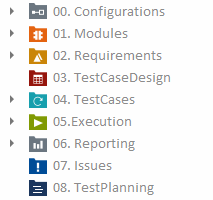In the digital era where speed, quality, and agility define success, test automation has become essential to software development lifecycles. Organizations must deliver faster without compromising on quality, and manual testing often becomes a bottleneck. Enter Tosca a comprehensive continuous testing platform from Tricentis that enables enterprises to automate testing at scale efficiently. Tosca stands out with its model-based test automation approach, eliminating the need for scripting while providing robust, scalable automation solutions. Its intuitive UI, reusable modules, and integration capabilities with CI/CD pipelines make it an industry favorite, especially for large enterprise applications like SAP, Salesforce, and Oracle.
But here’s the catch: even the best tool is only as good as the practices behind its use. Poorly designed automation frameworks can become brittle, unmaintainable, and costly. In this blog, we’ll cover proven best practices and guidelines to help you build a scalable, maintainable, and high-quality Tosca automation suite. If you’re aiming to future-proof your testing efforts and maximize the ROI of your Tosca investment, read on.
1. Organizing Your Tosca Workspace for Maximum Efficiency
A well structured workspace is the first step toward sustainable test automation. Think of it like constructing a building you need a solid foundation.
- General Modules, Requirements, Test Cases, Test Case Designs, and Executions should be maintained at the top level of the Master Workspace.
- Project or Department-specific assets should be organized under relevant subfolders to avoid clutter and ensure traceability.
Keeping things structured enables easier maintenance and faster onboarding of new team members.

2. Checkout, Checkin, and Collaboration Best Practices
Tosca’s version-controlled repository enables parallel development but only when used properly.
Rules for Team Collaboration:
- Checkout before editing: Always check out an object before making any changes.
- Minimal ‘Checkout Tree’ usage: Reserve Checkout Tree for the lowest possible folder or object level.
- Checkin frequently: Make it a habit to Checkin All before ending your workday.
- Revoke Checkout responsibly: Only administrators should perform revokes and ensure users understand that revoking discards uncommitted changes.

3. Building Reusable and Readable Modules
Modules are Tosca’s building blocks the better they are designed, the stronger your test suite will be.
Module Development Best Practices:
- Descriptive Names: Use logical, self-explanatory names for Modules and ModuleAttributes.
- Single Responsibility Principle: A module should represent only one UI control or business function.
- Organized Attributes: Arrange fields and controls logically within each module.
- Minimize Maintenance: Leverage Tosca’s dynamic control identification wherever possible.
Example: Instead of a generic Button1, name it LoginButton. Future developers (and even your future self) will thank you.

4. Designing Smart, Maintainable Test Cases
Creating maintainable test cases is the difference between a brittle automation suite and a scalable one.
Key Guidelines:
- Consistent Naming: Adopt a clear pattern like Feature_Action_ExpectedResult (e.g., Login_ValidCredentials_Success).
- Avoid Duplicates: Use the Repetition Property at the folder level for scenarios that need looping.
- Link TestSheets Properly: Drag-and-drop TestSheets into Templates instead of typing out XL-References manually.
- Parameterization: Where applicable, build data-driven tests to cover multiple scenarios with minimal changes.

5. Reducing Fragility: Move Away from Mouse and Keyboard Emulation
User behavior simulation (via {CLICK}, {SENDKEYS}) is tempting but risky.
Better Approach:
- Use Tosca’s control-based actions that interact directly with UI elements, making your tests more stable and resilient to UI changes.
- Avoid hardcoding paths and keystrokes that can break easily with minor UI shifts.
| S. No | ❌ Fragile Method | ✅ Stable Alternative |
|---|---|---|
| 1 | {CLICK} Login | Control-based Button.Click |
| 2 | {SENDKEYS} PasswordField | ModuleAttribute-based Input/td> |
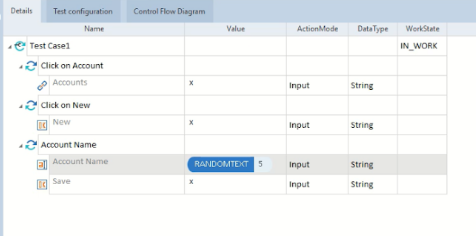
6. Maximizing Reusability with Repetition
Automation frameworks can become bulky if reusability isn’t prioritized.
Best Practices:
- Implement Repetition at the folder level for repetitive tasks.
- Reuse Test Steps by parameterizing with data tables instead of copy-pasting blocks of logic.
- Modularize logic that applies across different test cases (e.g., login functions, API authentication steps).
Example:
Testing multiple user login scenarios can be managed with a single Repetition loop instead of creating 10 duplicate TestCases.
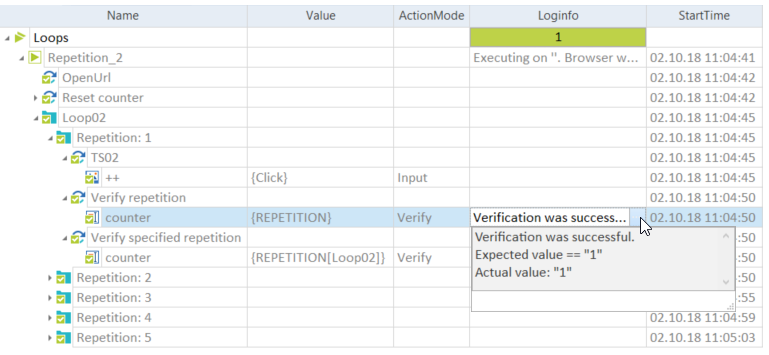
7. Designing Robust Recovery and Clean-Up Scenarios
Failures happen. The key is not just recovering from them but recovering smartly.
Recovery Levels in Tosca:
- TestCase-Level Recovery: Restarts the entire test in case of failure.
- TestStep-Level Recovery: Attempts to fix or recover at the step that failed.
Clean-Up Best Practices:
- Always close browsers, clear cookies, reset the environment after test runs.
- Kill hanging processes like browser instances using clean-up scenarios.
- Ensure tests start with a known state to eliminate flakiness.
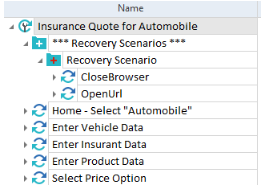
Related Blogs
Tosca Automation Tutorial: Model-Based Approach
Automation Test Coverage Metrics for QA and Product Managers
8. Managing Execution Lists Efficiently
ExecutionLists are not just for running tests—they are also crucial for reporting and traceability.
ExecutionList Management Tips:
- Organize ExecutionLists by features, sprints, or releases.
- Use consistent, intuitive names (e.g., Sprint10_FeatureX_Regression).
- Clean up old or deprecated ExecutionLists regularly to maintain a healthy workspace.
- Associate ExecutionLists with specific TestCaseVersions to maintain version traceability.
9. Synchronization and Strategic Waiting
Poor handling of wait conditions leads to slow, flaky tests.
Best Practices for Synchronization:
- Replace static waits (wait(5000)) with dynamic waits like WaitOnExistence.
- Use Tosca’s built-in synchronization methods that adapt to real-time application load times.
- Set reasonable timeout values to avoid false negatives.
Pro Tip: Synchronization is a hidden gem for speeding up test execution and improving test reliability.
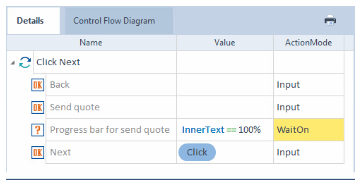
10. Key Benefits Table: Tosca Best Practices at a Glance
| S. No | Best Practice Area | Approach | Benefits |
|---|---|---|---|
| 1 | Workspace Organization | Structured folders and clear naming conventions | Easier collaboration and maintenance |
| 2 | Team Collaboration | Frequent Checkins and responsible Checkouts | Fewer conflicts, smoother teamwork |
| 3 | Module Design | Single-function, logical Modules | High reusability, lower maintenance cost |
| 4 | Test Case Design | Repetition and parameterization | Scalable, clean test suites |
| 5 | Interaction Handling | Avoid mouse emulation, prefer control actions | More stable and faster tests |
| 6 | Recovery and Clean-Up Strategy | Intelligent recovery and environment reset | Higher test reliability |
| 7 | Execution Management | Logical grouping and archiving | Easier tracking and reporting |
| 8 | Synchronization | Dynamic waiting strategies | Reduced flakiness, faster test runs |
Conclusion: Why Following Best Practices in Tosca Matters
Choosing Tosca is a smart move for enterprises aiming for scalable, resilient automation. But just buying the tool won’t guarantee success. Following structured best practices from workspace organization to robust recovery mechanisms is what transforms Tosca into a strategic advantage.
Remember: Scalability, maintainability, and speed are the pillars of effective automation. By building your Tosca framework on these principles, you set up your team for long-term success.
Frequently Asked Questions
-
What industries benefit most from Tosca automation?
Tosca shines in industries like finance, healthcare, retail, and manufacturing where complex applications (SAP, Salesforce) and compliance-heavy processes demand robust, scalable test automation.
-
How beginner-friendly is Tosca?
Tosca’s no-code, model-based approach is very beginner-friendly compared to scripting-heavy tools like Selenium or Appium. However, following best practices is key to unlocking its full potential.
-
Can Tosca automate API testing along with UI testing?
Yes! Tosca provides extensive support for API, web services, and database testing, enabling full end-to-end test automation.
-
How does Tosca handle dynamic web elements?
Tosca uses dynamic control IDs and adaptive recognition strategies to handle changes in web element properties, making it highly resilient to minor UI updates.
-
What reporting features does Tosca offer?
Tosca offers detailed execution logs, dashboard integrations with tools like Jira, and real-time reporting capabilities that can be integrated with DevOps pipelines.
-
How is Tosca different from Selenium?
Tosca offers a scriptless, model-based approach versus Selenium’s code-driven method. While Selenium requires extensive programming knowledge, Tosca is more accessible to non-technical users and is better suited for enterprise-level applications.
-
Is Tosca good for Agile and DevOps environments?
Absolutely! Tosca integrates with CI/CD tools like Jenkins and Azure DevOps, supports version control, and enables agile teams to implement continuous testing effectively.
The post Tosca : Guidelines and Best Practices appeared first on Codoid.
Source: Read More
